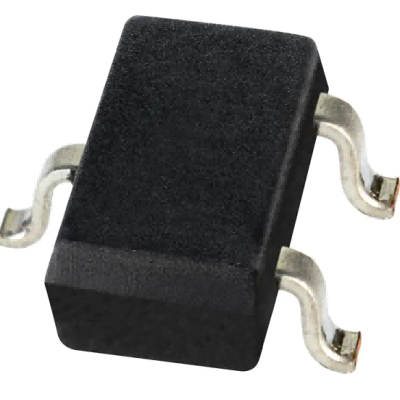SM353LT
Part Number: SM353LT
Manufacturer: Honeywell
Description: Board Mount Hall Effect / Magnetic Sensors
Shipped from: Shenzhen/HK Warehouse
Stock Available: Check with us
ICRFQ.com - Electronic Components Distributor in China Since 2003

Part Number: SM353LT
Manufacturer: Honeywell
Description: Board Mount Hall Effect / Magnetic Sensors
Shipped from: Shenzhen/HK Warehouse
Stock Available: Check with us
| Datasheet | |
|---|---|
| Category | Sensors, Transducers |
| Family | Magnetic Sensors – Switches (Solid State) |
| Manufacturer | Honeywell Sensing and Productivity Solutions |
| Series | Nanopower |
| Packaging | Cut Tape (CT) |
| Part Status | Active |
| Function | Omnipolar Switch |
| Technology | Magnetoresistive |
| Polarization | Either |
| Sensing Range | ±2mT Trip, ±0.3mT Release |
| Test Condition | -40°C ~ 85°C |
| Voltage – Supply | 1.65 V ~ 5.5 V |
| Current – Supply (Max) | 600nA |
| Current – Output (Max) | 150μA |
| Output Type | Push-Pull |
| Features | – |
| Operating Temperature | -40°C ~ 85°C (TA) |
| Package / Case | TO-236-3, SC-59, SOT-23-3 |
| Supplier Device Package | SOT-23 |
A magnetoresistive (MR) sensor IC in a 3-pin SOT-23 packaging is called the SM353LT from the Nanopower series. Large air gaps, weak magnetic fields, and low power requirements are all features of this ultra-sensitive gadget that allow it to be used in various applications. The sensor IC will react depending on which pole is applied in a direction parallel to the sensor. By making installation simpler and possibly lowering system costs, the SM353LT does not require the identification of magnet polarity. The push-pull output of this sensor eliminates the need for a pull-up resistor and uses a low average current consumption. Being energy-efficient, it can function with a 1.65V supply voltage.
The Magnetoresistive (MR) Sensor ICs from Honeywell’s Nanopower Series are ultra-sensitive components that support various applications with huge air gaps, weak magnetic fields, and low power needs.
The North or South poles applied in a direction parallel to the sensor cause the sensor ICs to respond. They simplify installation and might save system costs because the magnet polarity does not need to be known. They have a push-pull output that does not require a pull-up resistor and a shallow average current usage. The sensor ICs can function with a supply voltage as low as 1.65 V to increase energy efficiency.
To meet a range of application needs, the Nanopower Series is offered in two magnetic sensitivities:
An applied magnetic field is detected using tiny components known as magnetoresistive sensors. The sensor can function across a sizable air gap because no electrical contact is necessary. Magnetoresistive sensors are made to be compact and power-efficient to enable embedding.
The magnetoresistive effect describes how an applied magnetic field can change the resistance of an electrical wire. The resistance changes depending on how the field lines are positioned about the direction of the current flow.
This anisotropic magnetoresistive sensor (AMR) can be compared to the Hall Effect sensor. Hall Effect sensors are often less accurate and work at shorter ranges than AMR sensors. In contrast to Hall Effect sensors, AMR sensors cannot detect a complete 360-degree rotation of the magnetic field.
Magnetoresistive sensors have a wide range of uses, the majority focusing on locating or confirming the presence of objects. A magnetoresistive sensor can be inserted into the drawer to determine if a medical cabinet is open or closed. The magnetoresistive sensor on a treadmill can function as a dead-man switch, turning the machine off if the safety key is withdrawn.
It operates according to the electrodynamics principle, which asserts that any force acting on a magnetic field will cause a change in the direction of any current present. The charge carriers in the magneto resistor move in a straight line when there is no magnetic field.
The direction of the current shifts and flows in the opposite direction when there is a magnetic field present. Their charge carriers’ mobility is increased by the current’s indirect path, which results in the collision.
The collision accelerates the energy loss in the form of heat. The magneto resistor’s resistance rises as a result of this heat.
Due to a shortage of free electrons, a tiny current flows in the magneto resistor.
The magneto resistor electrons’ mobility affects how they deflect. In comparison to metals, it is more prevalent in semiconductor materials.
Magnetic field flux, strength, and direction are all measured by magnetic sensors. Magnetic field sensing has long been important in many industries.
It is possible to monitor things’ positions, orientations, revolutions, angles, the presence of an electric current, and other things using magnetic sensor readings (changes and fluctuations in the magnetic field). Magnetic sensors are thus employed in various industries, including the automotive, military, robotics, medical, space, and industrial measurement fields.
The magnetoresistive effect explains how an applied magnetic field can modify an electrical wire’s resistance. The resistance varies according to the orientation of the field lines concerning the current flow. It is possible to compare the Hall Effect sensor to this anisotropic magnetoresistive sensor (AMR). Compared to AMR sensors, hall effect sensors frequently have worse accuracy and operate at shorter ranges. In contrast to Hall Effect sensors, AMR sensors cannot detect a magnetic field that has rotated 360 degrees.
Trying to find SM353LT? Welcome to ICRFQ. You can get help from our sales team. You can review specific information, like SM353LT manufacturer and data sheets, to learn about component availability and pricing. Currently, SM353LT is available for purchase or learning. ICRFQ is a distributor of widely used, obsolete, and hard-to-find electrical parts.
WhatsApp us